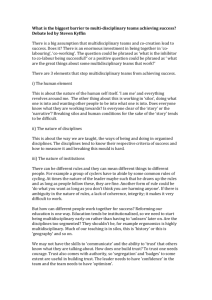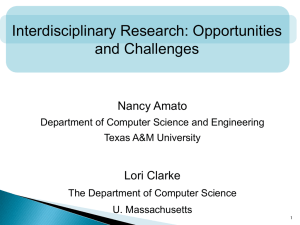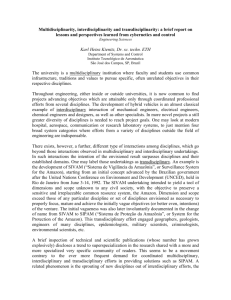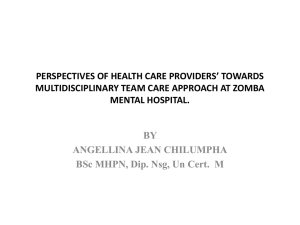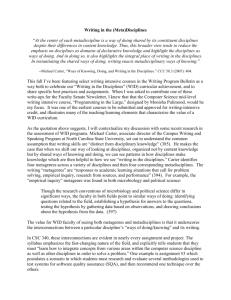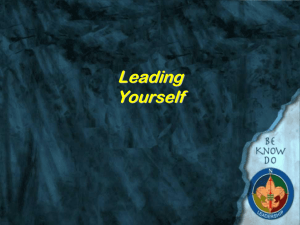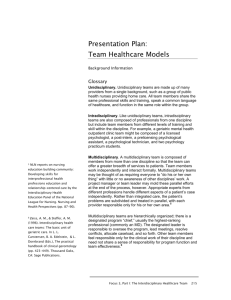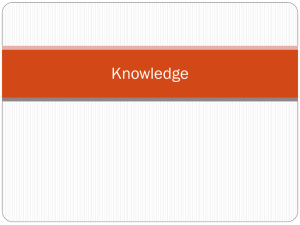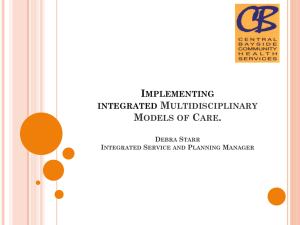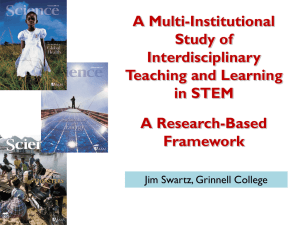Integrating Public Health Education: The Challenges in a
advertisement
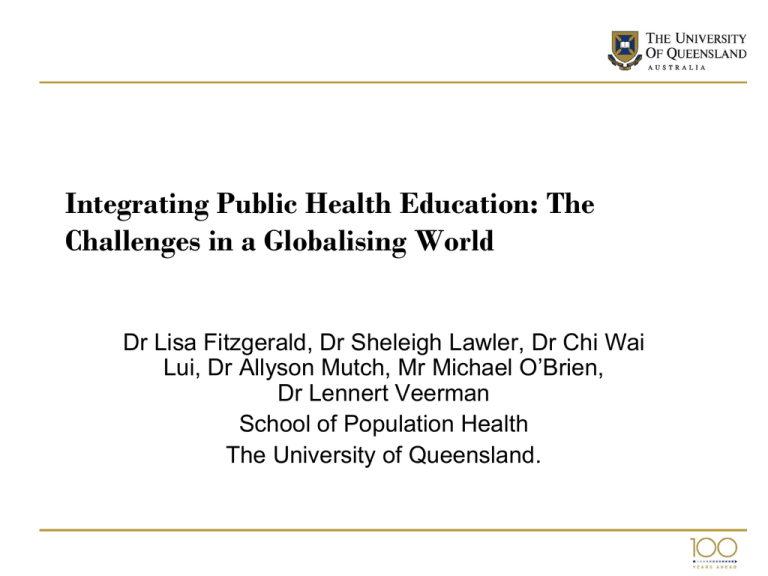
Integrating Public Health Education: The Challenges in a Globalising World Dr Lisa Fitzgerald, Dr Sheleigh Lawler, Dr Chi Wai Lui, Dr Allyson Mutch, Mr Michael O’Brien, Dr Lennert Veerman School of Population Health The University of Queensland. Taking an integrated approach in public health Why integrate? Ways of knowing – moving beyond the silos Ways of engaging – moving our students towards different ways of knowing Ways of knowing: multidisciplinary or interdisciplinary? UQ: Are we doing enough? “Multidisciplinarity draws on knowledge from different disciplines but stays within their boundaries..” PH: Should we be moving beyond multidisciplinary approaches towards interdisciplinary models and if so, what would that actually look like? “. An interdisciplinary approach analyses, synthesizes and harmonizes links between disciplines into a coordinated and coherent whole.” Ways of knowing: global or local perspectives? UQ: Should we break out of the silos or not? PH: Given the emphasis on integrating a global perspective, what does this mean for studying an MPH in the Australian context? Ways of engaging: Our context • Large research intensive university • 400+ Postgraduate Students - MPH • 1/3 international • About half study externally and part time • Many with medical/allied health backgrounds • 300+ undergraduates - BHlthSc • Future medical practitioners and non-clinical professionals Ways of Engaging: Active Classrooms/Interactive Technology? UQ how do we manage these challenges in our internal and external classroom? How do we bring our team with us? PH: How do we move students towards process of learning transformation? Ways of Engaging: Research/Teaching Integration The Challenges • Reflects and makes use of the teacher’s disciplinary research to benefit students learning and outcomes • Development of research skills important element of curriculum design and development • Adding another research agenda: Scholarship of teaching and learning – Improving Teaching Practice – Student learning outcomes Barbara Zamorski (2002) Research-led Teaching and Learning in Higher Education: A case, Teaching in Higher Education, 7:4, 411-427, DOI: 10.1080/135625102760553919 Research -Teaching integration Guest lectures/ meet the “expert” sessions – Collaborative approach to lecture development – Delivering key content with research examples Sharing publications, key public health media releases, for up-to-date literature for teaching Research Teaching Identification of high quality RHD students – Designing student projects and dissertations that support/feed into larger projects Student volunteers to support research staff Opportunities for RHD student’s skill development in lecturing and tutoring PH: How do we integrate T&R across the disciplines in public health to ensure effective programs? UQ: How do we expand research and teaching Integration across the school? Joining ways of knowing and ways of engaging Ways of knowing Ways of engaging Questions for Public Health • • • • • • Multidisciplinary: Should we be moving beyond multidisciplinary approaches towards interdisciplinary models and if so, what would that actually look like? Global: Given the emphasis on integrating a global perspective, what does this mean for studying an MPH in the Australian context? Learning transformations: How do we move students towards processes of learning transformation? Teaching/Research: How do we integrate T&R across the disciplines in public health to ensure students understand the processes needed to develop effective PH programs? What more can we do to empower and engage our students? http://padlet.com/charlotte_young/caphiaworkshop
